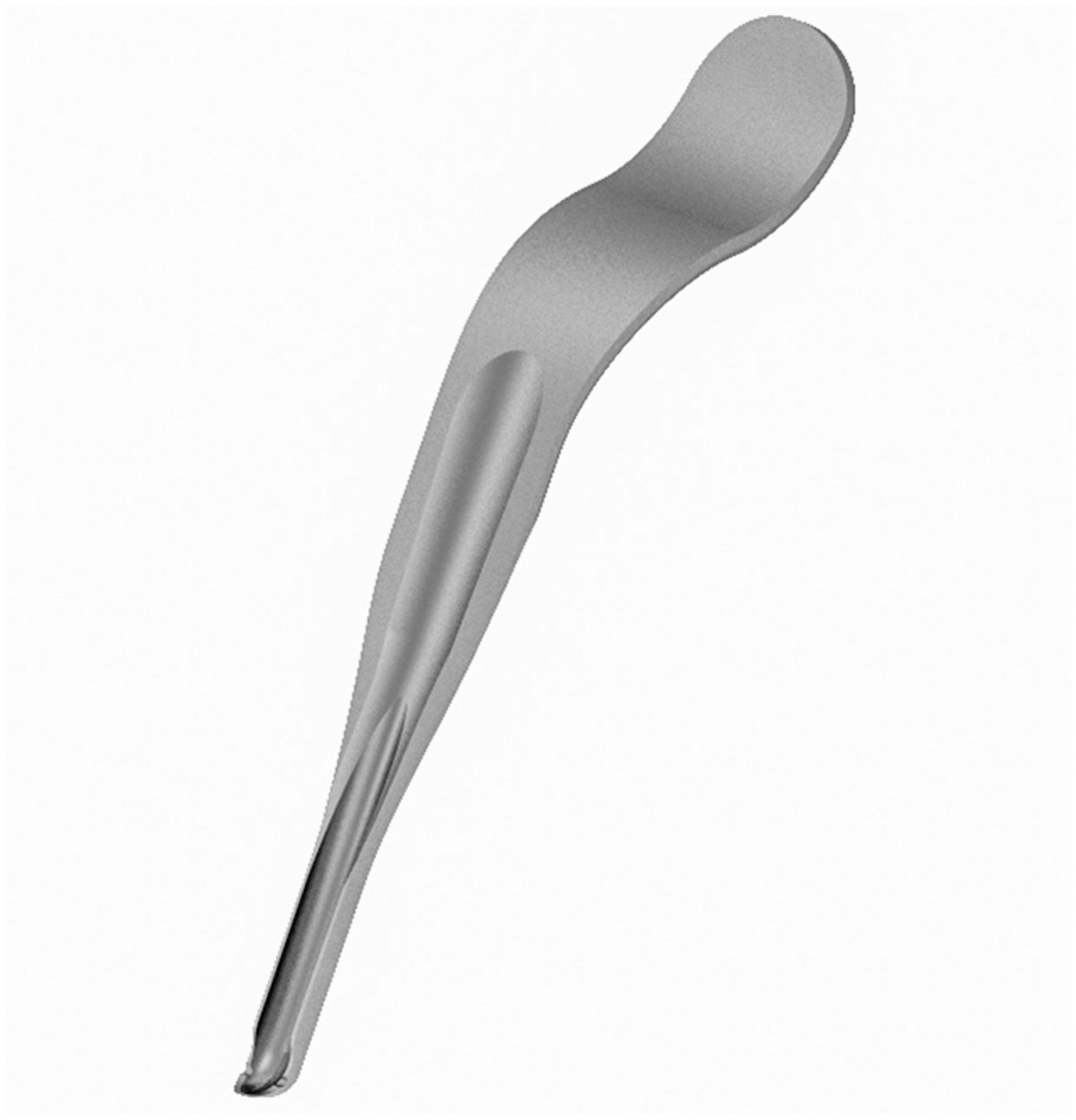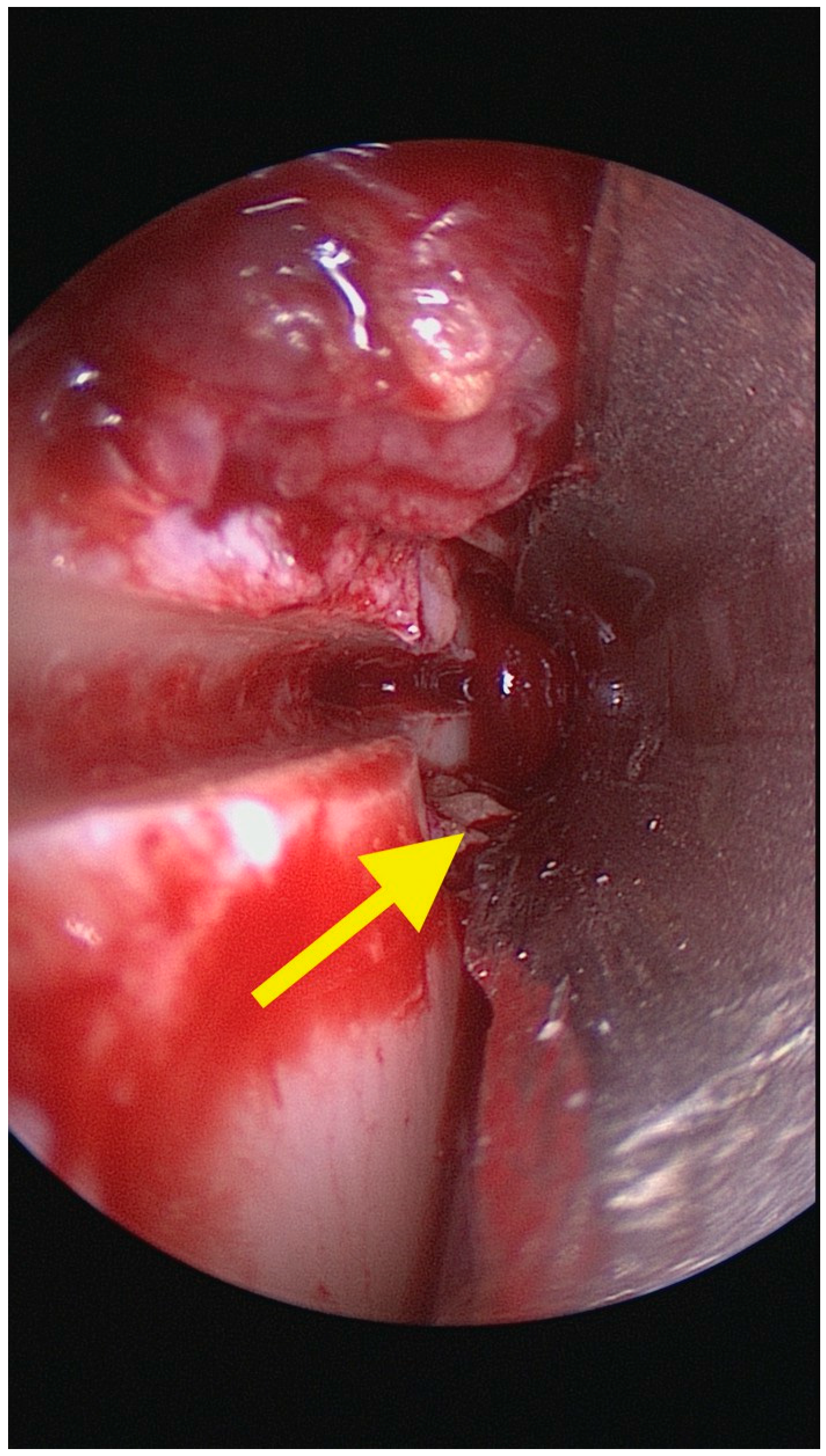Narrow-Bladed “Endo” Sagittal Split Osteotomy Retractor
Abstract
:References
- Trauner, R.; Obwegeser, H. The surgical correction of mandibular prognathism and retrognathia with consideration of genioplasty. I. Surgical procedures to correct mandibular prognathism and reshaping of the chin. Oral Surg Oral Med Oral Pathol 1957, 10, 677–689. [Google Scholar] [CrossRef] [PubMed]
- Obwegeser, H.L. Mandibular Growth Anomalies; Springer: Berlin/Heidelberg, Germany, 2011; p. 382. [Google Scholar]
- Matsushita, K. Wide-bladed mandibular channel retractor efficiently secures surgical manoeuvres during ramus osteotomy. Br J Oral Maxillofac Surg 2015, 53, 210–211. [Google Scholar] [CrossRef] [PubMed]
- Mommaerts, M.Y. Endoscopically assisted sagittal split osteotomy for mandibular lengthening: Technical note and initial experience. J Craniomaxillofac Surg 2010, 38, 108–112. [Google Scholar] [CrossRef] [PubMed]
- Mommaerts, M.Y. The surgical art of facial makeover. Planning and operative techniques. Chapter “Endoscopic bilateral sagittal split osteotomy (endo-BSSO)”. Sint Martens Latem 2013, 1, 189–196. [Google Scholar]




© 2016 by the author. The Author(s) 2016.
Share and Cite
Mommaerts, M.Y. Narrow-Bladed “Endo” Sagittal Split Osteotomy Retractor. Craniomaxillofac. Trauma Reconstr. 2017, 10, 244-245. https://doi.org/10.1055/s-0036-1584889
Mommaerts MY. Narrow-Bladed “Endo” Sagittal Split Osteotomy Retractor. Craniomaxillofacial Trauma & Reconstruction. 2017; 10(3):244-245. https://doi.org/10.1055/s-0036-1584889
Chicago/Turabian StyleMommaerts, Maurice Yves. 2017. "Narrow-Bladed “Endo” Sagittal Split Osteotomy Retractor" Craniomaxillofacial Trauma & Reconstruction 10, no. 3: 244-245. https://doi.org/10.1055/s-0036-1584889
APA StyleMommaerts, M. Y. (2017). Narrow-Bladed “Endo” Sagittal Split Osteotomy Retractor. Craniomaxillofacial Trauma & Reconstruction, 10(3), 244-245. https://doi.org/10.1055/s-0036-1584889


